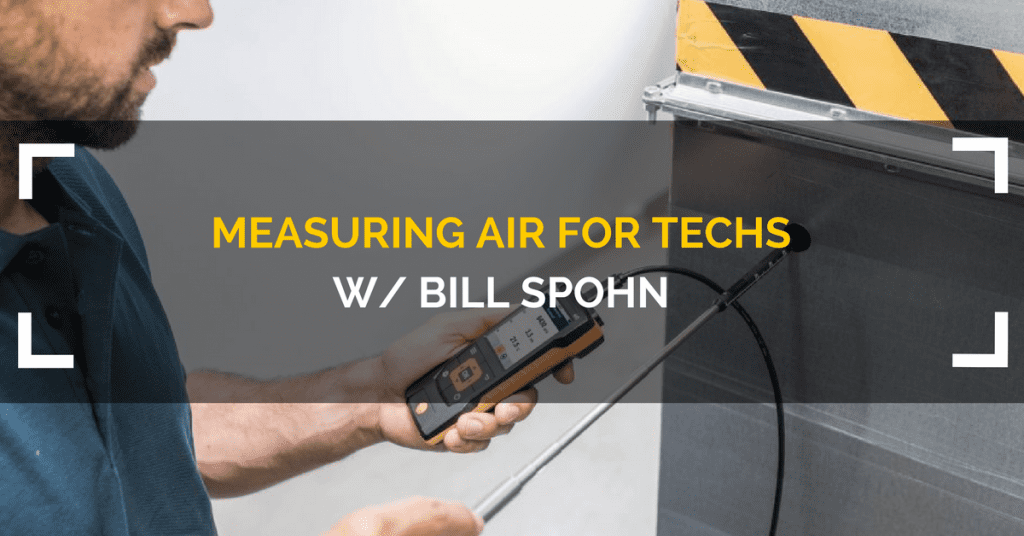Measuring Airflow For Techs (Podcast)

In this discussion with Bill Spohn from TruTechtools.com, we cover the practical steps and tools for YOU to start measuring airflow today, if not sooner.
There are several ways to measure airflow; when measuring airflow, start with the “why” rather than the “how.” Understand what the goal of the airflow is before you begin taking measurements in random places.
You can take a bulk measurement at a return, but you have to be prudent to avoid human error. The best way to avoid error is to use a TrueFlow grid, which replaces the filter and uses a pitot array to measure airflow in the return. Another relatively easy way to get a bulk measurement is to use a flow hood. However, it can be easy to mess up the positioning of a flow hood (or not have enough room for it).
Many techs misuse tools like vane anemometers and collect poor data. Vane anemometers can gather information throughout the duct (mini vane) or over the supply or return (larger vane). You want to pick up the micro-transitions in air velocity to get quality data; you can use either point or traverse measurements and average those readings to come up with your average CFM.
We can take measurements INSIDE the duct with pitot tubes (although we have our reservations about using those), hot wire anemometers, and mini vane anemometers. In-duct measurements require multiple measurements and consistency during testing.
A common system airflow measurement doesn't measure CFM at all; that measurement would be static pressure. However, you need to have the correct tables and understand all of the load requirements to measure static pressure effectively.
Bill and Bryan also discuss:
- Pitot tubes vs. static pressure probes
- Air movement metaphors
- Point vs. traverse measurements
- Static pressure drop
- Total system airflow setup
- Ventilation airflow
Author:










Comments
To leave a comment, you need to log in.
Log In